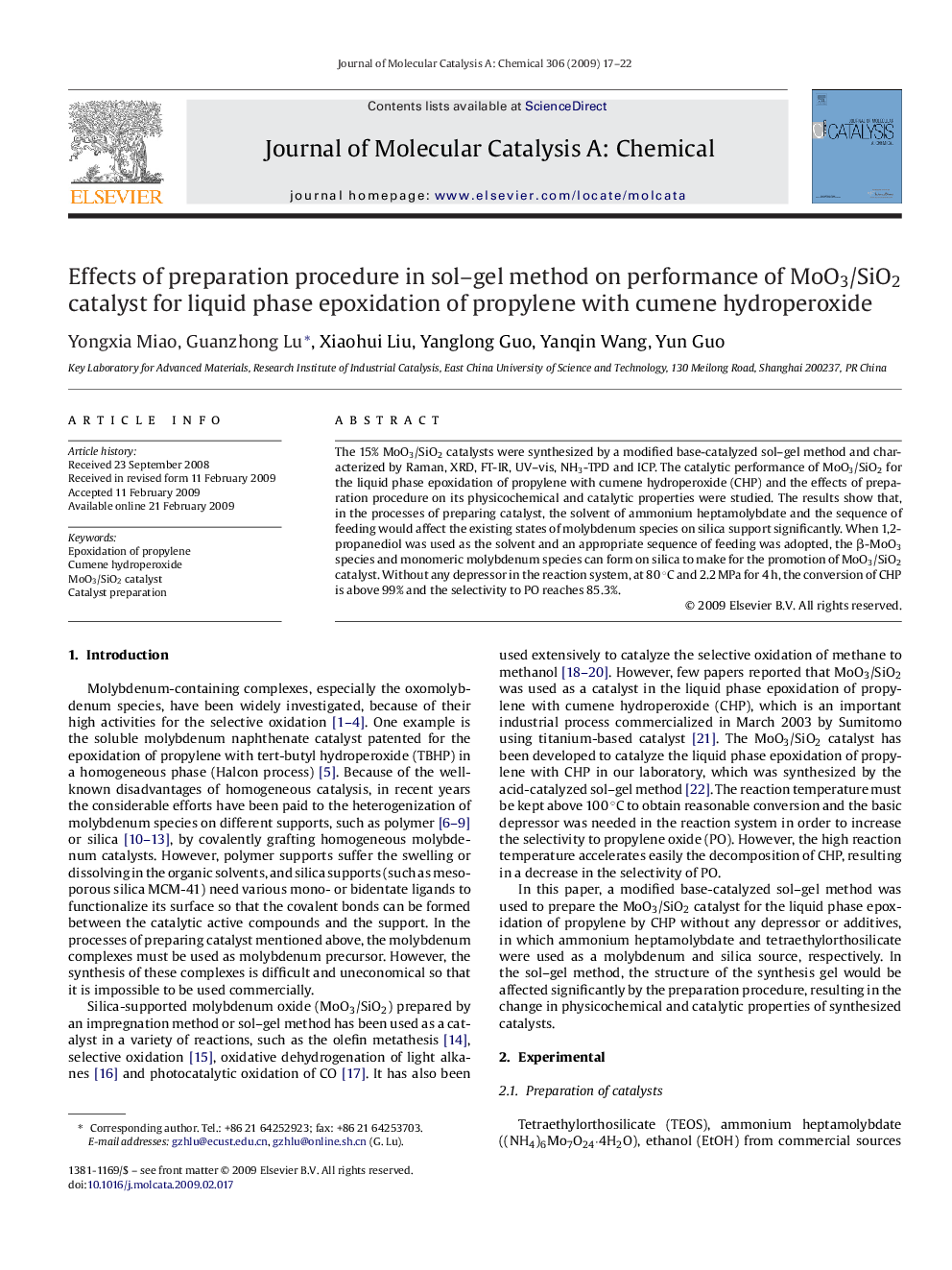| Article ID | Journal | Published Year | Pages | File Type |
|---|---|---|---|---|
| 67000 | Journal of Molecular Catalysis A: Chemical | 2009 | 6 Pages |
The 15% MoO3/SiO2 catalysts were synthesized by a modified base-catalyzed sol–gel method and characterized by Raman, XRD, FT-IR, UV–vis, NH3-TPD and ICP. The catalytic performance of MoO3/SiO2 for the liquid phase epoxidation of propylene with cumene hydroperoxide (CHP) and the effects of preparation procedure on its physicochemical and catalytic properties were studied. The results show that, in the processes of preparing catalyst, the solvent of ammonium heptamolybdate and the sequence of feeding would affect the existing states of molybdenum species on silica support significantly. When 1,2-propanediol was used as the solvent and an appropriate sequence of feeding was adopted, the β-MoO3 species and monomeric molybdenum species can form on silica to make for the promotion of MoO3/SiO2 catalyst. Without any depressor in the reaction system, at 80 °C and 2.2 MPa for 4 h, the conversion of CHP is above 99% and the selectivity to PO reaches 85.3%.
Graphical abstractThe MoO3/SiO2 catalyst was synthesized for the epoxidation of propylene with cumene hydroperoxide. The base-catalyzed sol–gel method is very effective to prepare the MoO3/SiO2 catalyst, but the preparation procedure affects the physicochemical and catalytic properties of the MoO3/SiO2 catalyst significantly. The presence of small size of β-MoO3 and monomeric molybdenum species on SiO2 are in favor of increasing its catalytic performance.Figure optionsDownload full-size imageDownload high-quality image (75 K)Download as PowerPoint slide
